Q
Where to find the color codes for Isuzu cars on D-MAX
If you're looking for the paint color code for your Isuzu D-Max, there are a few go-to spots to check. The most straightforward place is the vehicle's identification plate, usually located on the driver's side door jamb or inside the engine bay. This plate lists key vehicle specs, including the color code, which typically looks like a mix of letters and numbers (something like "U-346").
Your Isuzu owner's manual or service records should also have the color code noted down, making it easy to reference later. If you strike out with those, just reach out to an authorized Isuzu Malaysia dealer. Give them your VIN or license plate number, and their customer service team can help track it down for you.
Having the right color code is crucial for touch-ups or bodywork—it ensures the new paint matches perfectly and avoids that annoying mismatched look. With Malaysia's hot, rainy weather, don't forget to take care of that paint too! Regular waxing and keeping it out of harsh sunlight will help the finish last longer.
The D-Max has built a solid reputation here for being tough and practical, which is why it's such a hit in the local pickup scene. For those wanting to personalize their ride, Isuzu's official channels can hook you up with info on custom color options and genuine accessories.
Special Disclaimer: This content is published by users and does not represent the views or position of PCauto.
Related Q&A
Q
What type of gear oil is used for Isuzu D-MAX
When it comes to choosing transmission fluid for your Isuzu D-Max, here's what you need to know. For automatic transmissions, we strongly recommend sticking with the factory-spec Isuzu Genuine ATF SP III. This fluid is specifically engineered for Isuzu's auto boxes, ensuring top-notch lubrication and smooth gear shifts every time. To get the exact specs, just check your owner's manual or swing by an authorized Isuzu service center—they’ll point you in the right direction.
If you’ve got a manual transmission model, the go-to is usually a 75W-90 gear oil meeting API GL-4 or GL-5 standards. But don’t just grab any off the shelf—double-check based on your truck’s model year and transmission type to be safe.
Regular transmission fluid changes are non-negotiable. Automatics typically need a refresh every 40,000 to 60,000 kilometers, while manuals can stretch a bit longer to 60,000–80,000 km. That said, harsh driving conditions might mean you need to do it sooner, so always align with the manufacturer’s guidelines.
Picking the right fluid isn’t just about longevity—it also boosts fuel efficiency. Slap in the wrong stuff, and you could be looking at rough shifts or even costly transmission damage. So, always buy from trusted sources to ensure you’re getting the real deal.
Living in Malaysia’s rainy, humid climate? It makes checking your transmission fluid condition even more critical. If you notice it’s cloudy or smells burnt, don’t wait—get it changed ASAP. Your D-Max will thank you for it.
Q
What type of engine oil does Isuzu D-MAX use
When it comes to engine oil for your Isuzu D-Max, you’ll want to stick with what the factory recommends: either 5W-30 or 10W-30 viscosity, and make sure it’s at least API CJ-4 spec or newer. The exact pick depends on your truck’s year, engine model, and let’s not forget Malaysia’s climate—10W-30 tends to be the more versatile choice for those hot tropical conditions. Keeping up with regular oil changes (every 5,000 to 10,000 kilometers, or 6 months, whichever comes first) is huge for keeping that turbo diesel engine running strong and lasting longer. And don’t skimp on a quality oil filter—you don’t want gunk messing up your engine.
Diesel engines are pretty particular, right? They need oil that stays clean and holds up under stress. That’s where CJ-4 or CK-4 oils shine—they handle high-sulfur fuels and carbon buildup like pros. If your D-Max has a DPF (diesel particulate filter), you’ll definitely want a low-ash oil, something like ACEA C3 or C4, to prevent clogging.
Malaysian owners should also check the Isuzu owner’s manual or hit up an authorized service center for their take. Your driving style matters too—if you’re always hauling heavy loads or doing long highway stretches, you might need to adjust your service intervals. But here’s the golden rule: never cheap out on subpar oil. It might save a few bucks now, but it could void your engine warranty or cause serious long-term damage down the line. Not worth the risk.
Q
how much is Isuzu D-MAX
Isuzu D-Max pricing in Malaysia varies depending on the trim and specs you go for. Right now, you're looking at a ballpark figure between RM90,000 and RM140,000, and that all hinges on the version you pick—like single cab vs. double cab, 4x4 or 4x2, plus the tech and safety goodies thrown in, such as the Advanced Driver Assistance System (ADAS).
The D-Max has built a solid rep for being tough as nails, packing serious off-road chops and a punchy yet efficient diesel engine. It’s a real workhorse that handles Malaysia’s diverse roads like a pro, whether you’re stuck in city traffic or out exploring those rural backroads. And it’s not all brawn either—inside, you’ll find a modern cabin with a decent infotainment setup to keep things comfortable on the go.
If you’re in the market for a pickup, price is just one piece of the puzzle. You’ll want to weigh up fuel economy across different models, how much you can haul, and the warranty coverage too—all of which play into the long-term cost of ownership. Isuzu’s got a pretty strong reputation in Malaysia, and their after-sales network is pretty well-established. My advice? Head down to your nearest authorized dealer for a test drive—you’ll get the latest quotes and any ongoing promotions that way.
Q
What is the fuel tank capacity of Isuzu D-MAX 2007 in liters
The 2007 Isuzu D-Max has a fuel tank capacity of 76 liters. Back in the day, this was a pretty popular pickup truck in the market, and it won over a lot of Malaysian owners with its durability and fuel efficiency. That 76-liter tank? It gives you a solid range, whether you're doing long hauls or carting around cargo, and it's still convenient enough for daily drives too.
Now, don't get me wrong—tank size is definitely a big part of how far you can go, but real-world fuel economy also depends on how you drive, the roads you're on, and how well you keep the truck maintained. So, if you own one, keeping up with regular servicing is a good idea to make sure it stays efficient.
Another thing that makes the 2007 D-Max stand out is its diesel engine. It cranks out plenty of torque at low revs, which is perfect for Malaysia's hilly terrain or those rural backroads. No wonder it did so well as both a workhorse and a family ride.
Q
Isuzu D-MAX made in which country
The Isuzu D-Max is a pickup truck built by Japan's Isuzu Motors, with its primary production hub located in Thailand – a key manufacturing base for Isuzu in Southeast Asia. The trucks rolling off Thai lines are mainly targeted at regional markets, including Malaysia. Over in Malaysia, the D-Max has built up a solid fan base, with buyers really digging its tough-as-nails durability, rock-solid reliability, and impressive off-road chops. What's more, Isuzu's Thai plant leverages advanced production tech and strict quality control measures, making sure every D-Max meets global standards. While Isuzu has factories dotted around the world, most D-Max models heading to Southeast Asia trace their roots back to Thailand. For Malaysian buyers, the D-Max isn't just a workhorse; it's surprisingly family-friendly too. Its fuel efficiency and low running costs are also big ticks in its favor. If you're in the market for a pickup in Malaysia, the Isuzu D-Max is definitely one to shortlist. It also benefits from a well-established after-sales network locally, so owners can expect solid support when they need it.
Q
Where is the engine number for Isuzu D-MAX
For the Isuzu D-Max, you'll typically find the engine number stamped onto the engine block itself, usually close to the firewall. More specifically, check either the left or right side of the engine bay – it's etched into the metal, so you might need to wipe away some dirt or oil to get a clear look. If you're struggling, don't forget to check your vehicle's service book or registration documents too – manufacturers often list it there for easy reference.
Malaysian D-Max owners who can't spot the engine number should definitely flip through their owner's manual first. If that doesn't help, reaching out to an authorized Isuzu service center is your best bet – those guys know these trucks inside out and can point you in the right direction.
Why does this matter? Well, the engine number is a big part of your vehicle's identity. You'll need it for ownership transfers, insurance paperwork, and it's crucial for verifying if the engine is the original unit – super important when buying a used D-Max or even just for major servicing. Let's be real, with how tough and reliable the D-Max is, keeping track of these details just makes good sense for keeping your truck running strong. Isuzu built these pickups to be workhorses, and knowing the little things like where to find the engine number helps you stay on top of maintenance and protect your investment.
Q
What model of Isuzu D-MAX automatic transmission fluid is used
When it comes to choosing automatic transmission fluid for your Isuzu D-Max, stick with ATF Fluid that meets Isuzu's factory specs – specifically Type III or Type IV. Check your owner's manual or hit up an authorized service center to confirm the exact recommendation. The go-to from the factory is usually Dexron III or an equivalent that's fully compatible with the transmission's hydraulic system and clutches.
Given Malaysia's hot weather, I’d recommend changing the transmission fluid every 40,000 to 60,000 kilometers. This regular maintenance keeps things lubricated and helps with heat dissipation. While you’re at it, keep an eye out for discoloration or debris in the fluid – catching that early can really help extend your gearbox’s lifespan.
Heads up though: D-Max models from different years might have slightly different fluid requirements. Newer models, for example, might call for lower viscosity or fully synthetic fluids. So make sure you double-check your vehicle’s production year and transmission type before grabbing a bottle off the shelf.
Using cheap or off-spec fluid is a bad idea – it can lead to rough shifting, clutch slippage, and all sorts of headaches. Stick with reputable brands like Petronas Syntium ATF or Castrol Transmax that have API certification.
If you’re swapping the fluid yourself, remember to check the level when the engine’s warm and the fluid’s up to operating temp – it should sit right in the middle of the dipstick marks. Also, some models need a reset of the transmission’s adaptive learning values after a fluid change (you might need a special tool for that). Do that, and you’ll keep those shifts smooth as butter.
Q
Where is the chassis number of Isuzu D-MAX?
Looking to locate the VIN (Vehicle Identification Number) on your Isuzu D-Max? There are a few go-to spots to check. The most convenient one is probably the dashboard, right below the driver’s side front windshield – you can usually spot it easily through the glass. Another common place is under the hood; pop that open and look for a metal plate or sticker in the engine bay. You might also find it stamped on the chassis rail, near the right front wheel area.
Your VIN is like your truck’s unique fingerprint – super important for things like ownership transfers, insurance paperwork, and even servicing. The Isuzu D-Max is a big hit in Malaysia’s pickup scene, and it’s easy to see why with its tough build and practicality. Knowing where to find that VIN helps you stay on top of your vehicle’s admin game.
While you’re at it, it’s a good idea to keep tabs on other key details too, like the engine number and registration docs. Making sure all your paperwork matches the actual vehicle avoids headaches down the line. If you’re still struggling to track down the VIN, just flip through your owner’s manual or swing by your nearest authorized Isuzu dealer – they’ll point you in the right direction.
Q
What type of fuel is added to Isuzu D-MAX?
If you're rolling with an Isuzu D-Max – that tough, reliable workhorse of a pickup – here's the lowdown on fuel in Malaysia: stick with Euro 5 spec diesel, like B7 or B10 biodiesel blends. But hey, don't just take my word for it – always check your owner's manual or the inside of the fuel cap for the exact specs. There might be slight variations depending on the model year and engine, y'know? Both the 1.9L and 3.0L turbo-diesel mills under the D-Max's hood are optimized for low-sulfur diesel, so that's your sweet spot.
You'll usually spot "Euro 5 Diesel" plastered on the pumps at Malaysian stations – that's your cue. And trust me, hitting up reputable stations is key to keeping that fuel quality top-notch. Slumming it with dodgy diesel long-term? Big no-no. You're looking at potential DPF (Diesel Particulate Filter) clogging or a noticeable dip in engine performance. Not worth the hassle.
Now, the D-Max already nails it when it comes to fuel economy, but you can squeeze even more out of it with proper maintenance – regular fuel filter changes, for starters. If you're often hauling heavy loads or taking it off-road, throwing in the manufacturer-recommended fuel additive might be a smart move to keep the fuel system in tip-top shape.
And hey, quick heads-up for other pickup owners: fuel requirements can vary a bit between brands. So regardless of what you drive, always play it safe and follow your specific model's official guidelines. Your truck (and your wallet) will thank you.
Q
Can Isuzu D-MAX be fueled with B7 diesel?
Wondering if you can fill up your Isuzu D-Max with B7 diesel? The short answer is yes—your D-Max’s diesel engine is fully compatible with B7. For those not in the know, B7 is a blend containing 7% biodiesel, and it’s pretty much the go-to in Malaysia, working well in most modern diesel vehicles, including our trusty D-Max.
B7 isn’t just about meeting local environmental standards; it actually helps cut down on carbon emissions while keeping your engine’s performance and fuel efficiency in check. Isuzu engineered the D-Max’s powerplant to handle various diesel types, B7 included, so you can use it without any worries. Plus, using B7 is a solid way to back Malaysia’s biodiesel initiatives and give sustainability a little boost.
A quick heads-up though: while B7 won’t harm your engine, sticking to regular maintenance is still a good idea to keep everything running at its best long-term. If you’re ever second-guessing the fuel type, just flip through your owner’s manual or swing by an authorized Isuzu service center—they’ll hook you up with all the details you need.
Latest Q&A
Q
Toyota Hiace how many seats
The Toyota Hiace is a staple in Malaysia's commercial and family vehicle scene, with seating options that vary by trim. The standard models, like the Hiace Van, typically offer 12 to 15 seats—perfect for commercial shuttle services or group outings. On the flip side, the more upscale variants such as the Hiace Super Grandia trim down to 9 to 11 seats, prioritizing comfort with premium upholstery and rear air-conditioning, ideal for family trips or business reception. It is worth noting that some aftermarket shops also offer custom seating configurations, such as adjusting to 13 seats or reducing to 8 seats to flexibly adapt to different uses. For Malaysian buyers, the Hiace's biggest draws are its legendary durability, high ground clearance that handles local road conditions like a champ, and wallet-friendly maintenance costs. The diesel engine variants, in particular, stand out for their impressive fuel efficiency. For the most accurate specs, though, your best bet is to hit up a Toyota Malaysia authorized dealer. They can walk you through the latest model year details, including safety features like ABS and dual airbags—stuff that could definitely sway your final purchase call.
Q
How many models does Toyota Hiace have
The Toyota Hiace is a total workhorse and family favorite here in Malaysia, killing it in both commercial and personal use. You’ll mainly find a few go-to variants cruising our roads: the standard Hiace Van, the Hiace Commuter (that’s the people-hauler), and the top-dog Hiace Super Grandia (the luxury liner). These aren’t just badge swaps—they’re built for different jobs. The Hiace Van? It’s all about getting cargo from A to B, no frills, just space. But the Commuter and Super Grandia? They’re where comfort takes the wheel, packing nicer seats, better air-con, and all that extra kit to keep passengers happy.
Under the hood, Toyota’s got you covered with diesel and petrol engine options, so whether you’re after torque for heavy loads or something smoother for daily drives, there’s a Hiace for that. Malaysians swear by this van for a reason—its legendary durability and rock-solid resale value are huge wins. Plus, that cavernous interior and flexible seating? Perfect for everything from running a business to shuttling the whole family (and then some).
If you’re thinking of adding a Hiace to your fleet or driveway, do yourself a favor: figure out what you’ll *really* use it for, then hit up your nearest authorized dealer for a test drive. Trust me, you’ve gotta feel that space and drive to get the full picture.
Q
Mitsubishi Xpander made in which country
The Mitsubishi Xpander is a multi-purpose vehicle (MPV) primarily built in Indonesia, rolling off the lines at Mitsubishi Motors' local plant there. Since its launch back in 2017, this people-mover has struck a chord in Southeast Asian markets – Malaysia included – thanks to its roomy interior and all-around practicality.
The Xpander's design does a neat job balancing the agility needed for city hops with the space requirements of family getaways. Under the hood, you'll find a 1.5-liter MIVEC engine, which delivers smooth power and decent fuel efficiency – perfect for Malaysia's varied road conditions, whether you're navigating city streets or hitting the highway.
What really makes it stand out for Malaysian families, though, are those thoughtful touches: the generous ground clearance that handles those unexpected potholes, and the super flexible seating arrangements that let you juggle passengers and cargo with ease. Being purpose-built for Southeast Asia, the Xpander nails the local adaptations. Think a robust air conditioning system that laughs at our tropical heat, and interior materials that can take the daily grind – little wonder it's a top pick among Malaysian buyers.
If the Xpander has piqued your interest, swing by your nearest Mitsubishi dealership for a test drive. There's no better way to get a feel for how it drives and just how practical it really is.
Q
how many seater is Mitsubishi Xpander
The Mitsubishi Xpander has carved out a solid following in Malaysia's MPV scene, and it's easy to see why. This 7-seater is a hit with families, thanks to its roomy interior and smartly designed, flexible seating. The 2+3+2 layout works well – the second row slides back and forth to free up legroom, while the third row is perfect for kids or adults on shorter trips. Need more cargo space? Just fold those rear seats down, and you've got plenty of room for whatever you're hauling.
Under the hood, there's a 1.5-liter MIVEC naturally aspirated engine, paired with either a 4-speed auto or 5-speed manual gearbox. It's not about speed here; it's about that smooth, easy drive for daily use and keeping fuel costs in check – exactly what family buyers want.
Practical touches don't stop there. You get handy features like a multifunction steering wheel, a touchscreen infotainment system, and a reverse camera, all of which make life behind the wheel that bit easier.
What really makes the Xpander stand out in Malaysia, though, is its whole package. It's priced reasonably, Mitsubishi's known for building reliable cars, and their after-sales network here is pretty extensive. If you're a consumer who prioritizes space and getting good value for your money, this is a solid pick in the practical family MPV segment.
Q
how much is the Mitsubishi Xpander
The Mitsubishi Xpander's pricing in Malaysia varies depending on the trim level and specifications. The entry-level Xpander Standard starts at approximately RM92,890, while the higher-spec Xpander Premium comes in at around RM99,890. Actual prices may fluctuate based on dealer promotions or optional extras selected. This 7-seater MPV has struck a chord with local families thanks to its spacious interior, practicality, and strong value for money. Under the hood, you'll find a 1.5L MIVEC naturally aspirated engine churning out 105PS and 141Nm, paired with a 4-speed automatic transmission. Fuel efficiency is rated at around 6.6L/100km. Convenience features include LED daytime running lights and power-folding side mirrors.
Notably, the Xpander boasts a generous 205mm of ground clearance, making it better suited than your average MPV for those rougher patches of road you might encounter around Malaysia. Its "Dynamic Shield" family face also gives it a distinct and recognizable look on the road. When considering rivals in the same segment, the Toyota Avanza or Honda BR-V might come to mind, but the Xpander holds an edge in terms of third-row space and cargo-carrying versatility. It's always a good idea to head down to an authorized showroom for a test drive to get a real feel for how it handles, and to check out the latest promotions – things like low-interest financing or complimentary service packages could sweeten the deal.
View MoreRelated News
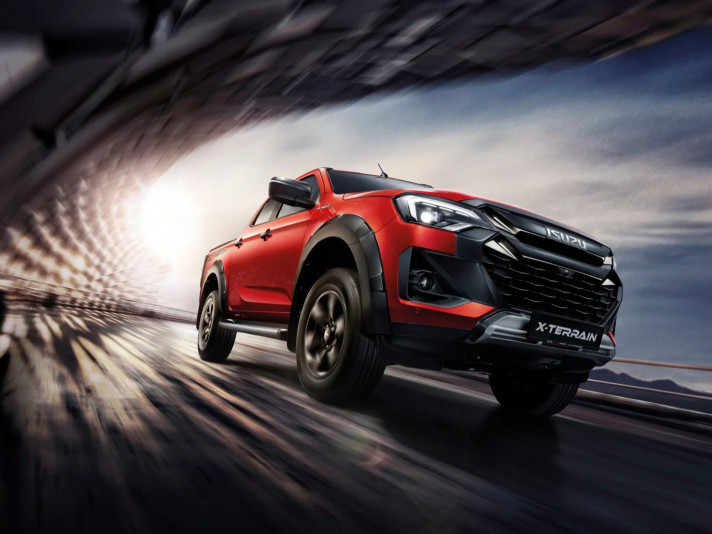
Isuzu D-Max continues to be one of Malaysia's best-selling pickup trucks, selling 3,081 units in the first half of the year
AshleyJul 30, 2025

Reviewing the Isuzu D-MAX: Does Its Splendid Design Match Its Off-Road Capability?
RobertApr 16, 2025
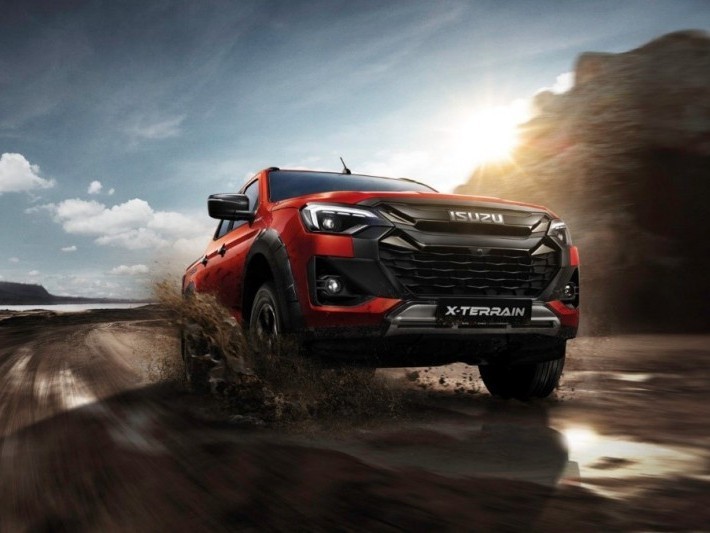
Isuzu D-MAX third generation model, seven options: market share 16.6%!
JamesSep 13, 2024
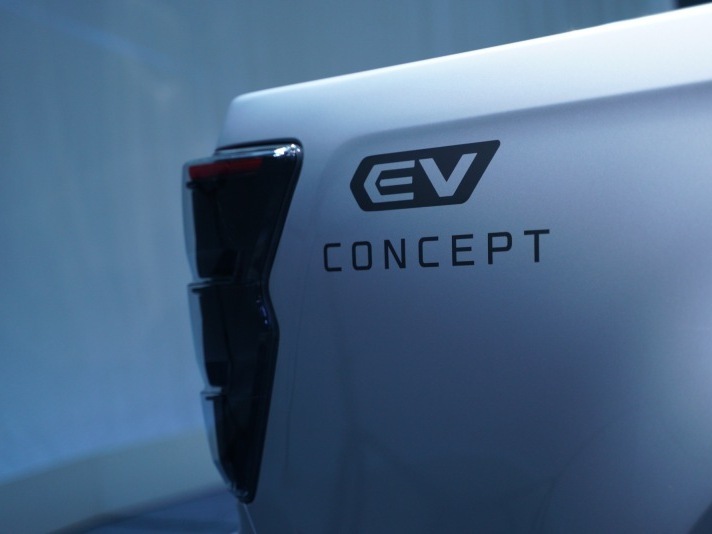
Reasons Why Pickups and SUVs Are Not Suitable for Electric Drive, Industry Secrets You Must Know Before Buying
JamesFeb 14, 2025

Isuzu launches the all-new MAXFORCE engine, more powerful!
AshleyNov 15, 2024
View More








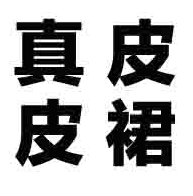
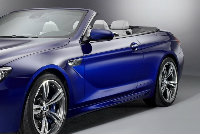
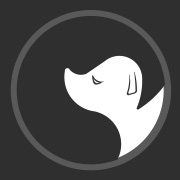

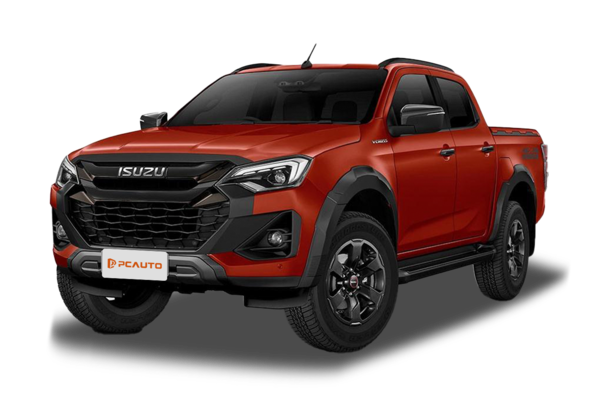





Pros
Cons